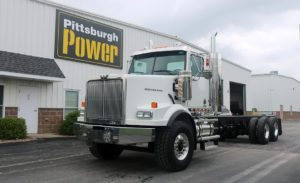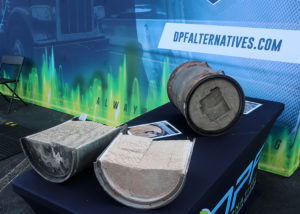The shortages our country is experiencing are making their way to diesel fuel and Diesel Exhaust Fluid (DEF). If the current shortages of mechanics, trucks, and drivers does not improve then shortages may continue to get worse, so plan ahead. As an owner operator, you should have oil and filters for at least two oil changes, a spare set of tires, and a few extra gallons of DEF, as well.
Since all new diesel engines in semi-trucks from 2012 use DEF, a supply chain shortage of DEF could cripple an independent truck transport business. The general public has gotten a taste of how the recently exposed fragility of our global supply chain can affect them directly. If major cities only have about a 3.5-day supply of food on hand, then grocery stores would get depleted very quickly if there was a severe shortage of DEF that limits truck transport operation.
Most of us living today were born after the Great Depression when there was massive unemployment which peaked at 25.6% and took over a decade to resolve. This resulted in widespread shortages of supplies, raw materials, and food. During the latest pandemic, the US unemployment rate hit 14.7% in April 2020 but has now dropped to just 1% higher than the half-century low of 3.5% reported in December 2019 (just prior to the pandemic). Even so, supply chain disruptions caused by the “self-inflicted” business furloughs and layoffs during the pandemic of 2020 have expanded throughout 2021 and may continue well into 2022. The owner operator should leave nothing to chance or, as the saying goes, “Hope for the best but plan for the worst.”
Can you run a 2012 or newer diesel engine without DEF? The answer is no. The DEF light will come on, and then if you continue to ignore it your truck will go into “limp” mode and performance will be greatly reduced. However, if you use the Max Mileage Fuel Borne Catalyst, the 10% on average increase in engine thermal efficiency can reduce DEF consumption by 20% or more. Conserving DEF by helping your engine run cleaner and more efficiently with the help of the Max Mileage product is always a smart strategy.
Please help yourself – do not delete the emissions system from your truck. If you are having emissions problems with a 2012 or newer engine, get to a DPF Alternatives location now. Once you have the emission equipment removed, many of the dealerships and garages will not work on the truck. The fines are heavy, $25,000 or more to the shop, plus the mechanic working on the truck will get fined if the EPA happens to visit the shop while the truck is there.
Emissions systems are running trouble free if you purchase a truck new and run Max Mileage from day one. If you purchase a used truck, have the Diesel Force cleaning done, then have one of the DPF Alternative shops do an ultrasonic cleaning to the Diesel Particulate Filter and start using Max Mileage. Your truck will run great, and you’ll now have a lifetime warranty for any future DPF cleanings.
When it comes to preventative maintenance on your modern semi-truck, you must plan ahead to have your DPF filter cleaned. A DPF filter collects soot from the exhaust stream and burns it off during a regeneration cycle. Ash is a waste product from the regeneration cycle and builds up inside the filter. Ash is non-combustible and will not burn during the regeneration process. The DPF will need to be removed and cleaned through a proper procedure or replaced with a remanufactured DPF. Otherwise, ash will continue to build up and will need to be cleaned to keep the system working properly.
The aftertreatment system should be inspected on the OEM specified schedule. A typical DPF maintenance interval is around 200,000 miles. A qualified technician should remove and physically inspect the DPF. They should also look through all the stored parameters in the ECM. Most modern ECMs provide an estimated ash load percentage that can be viewed via diagnostic software. Aftertreatment history can also be reviewed, and issues can often be caught early before further damage occurs.
Here at Pittsburgh Power, we can physically inspect, review stored ECM data, and now clean DPFs with excessive ash load. The process includes removal, inspection of the filter, and an ultrasonic deep clean in a proprietary solution. This is the best method to remove ash and restore your filter. We provide two types of aftertreatment system cleanings, each with their own benefits, but it is most beneficial if you perform both of them together.
The first cleaning option is our Diesel Force cleaning. This involves running a foam cleaning solvent through the engine, turbo, manifolds, exhaust, and aftertreatment system. It does a great job at removing carbon deposits throughout the system. However, it does not remove ash. Our new service, DPF Alternatives, will thoroughly clean your DPF and SCR and remove ash. It’s a multi-step process that involves first removing the DPF, a flush, an ultrasonic tank, a kiln, and a flow bench. When you combine the two services, you have a clean engine and exhaust, and DPF and SCR that will be almost as clean as when it was brand new.
As always, thanks to Andrew Wilson and Leroy Pershing for their help in putting this article together. To see all our available products and services, stop by our shop in Saxonburg, PA, visit us at www.pittsburghpower.com, or call us at (724) 360-4080. We are here to help keep your truck running as efficiently as possible.


